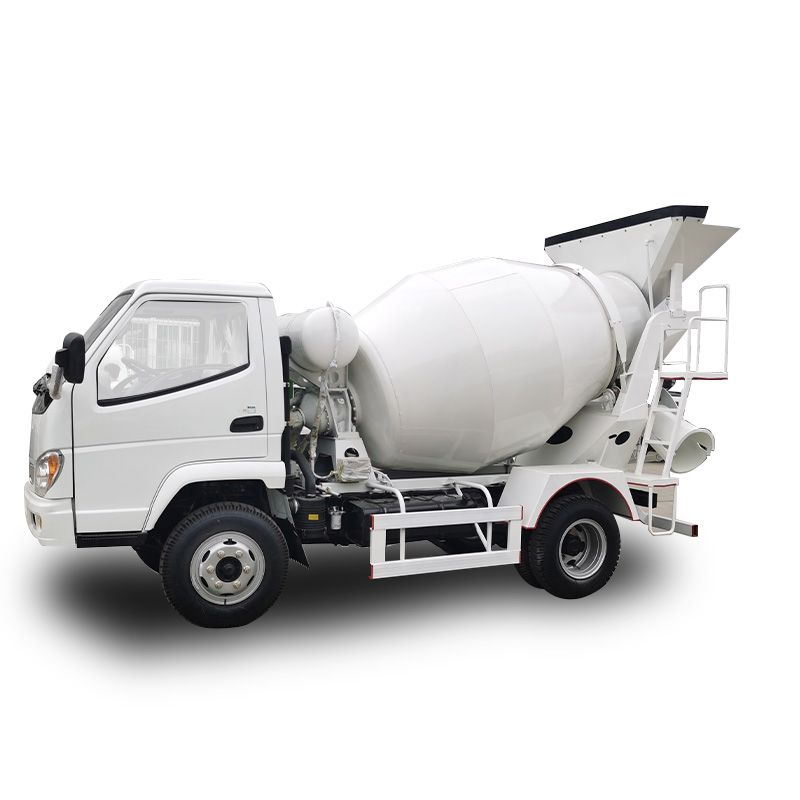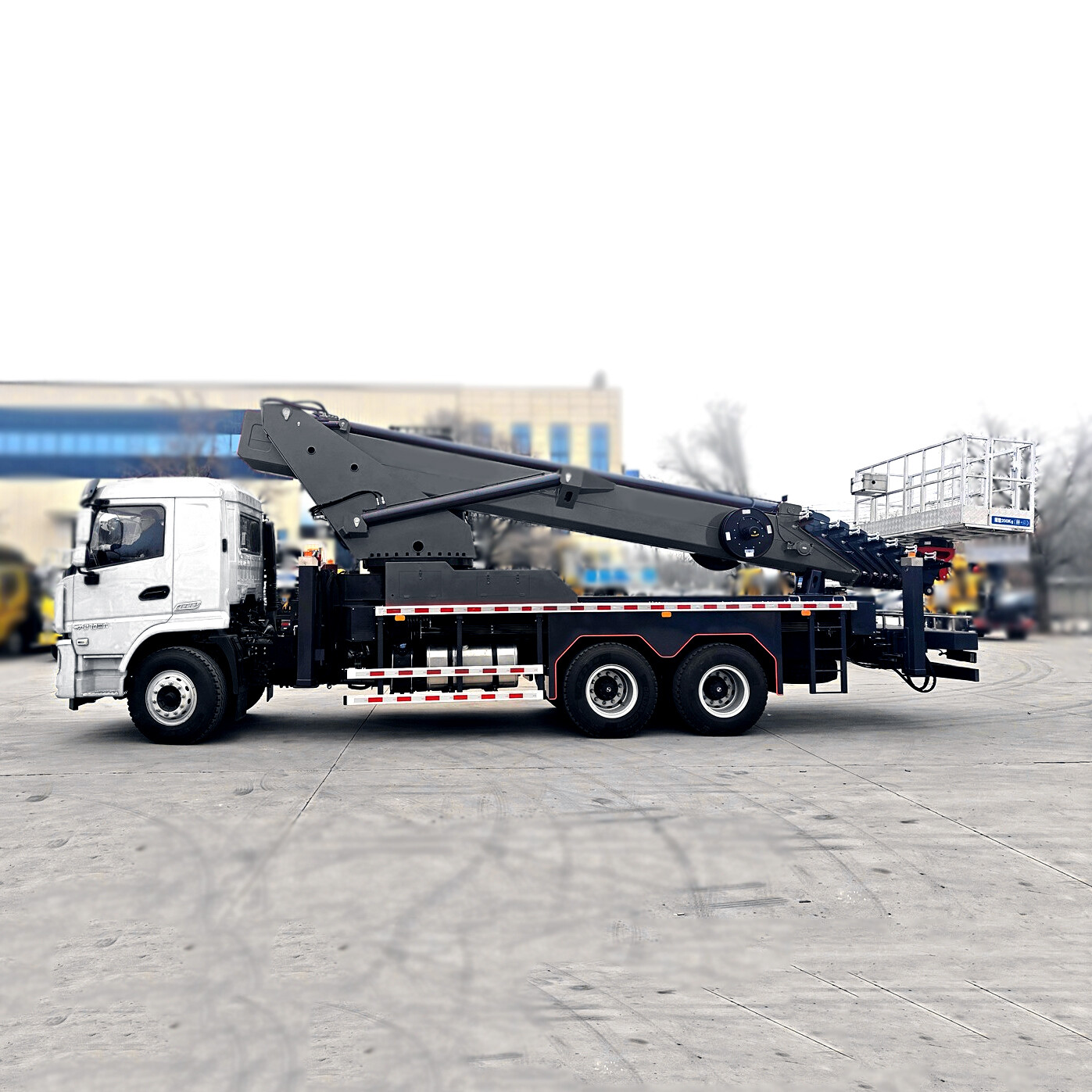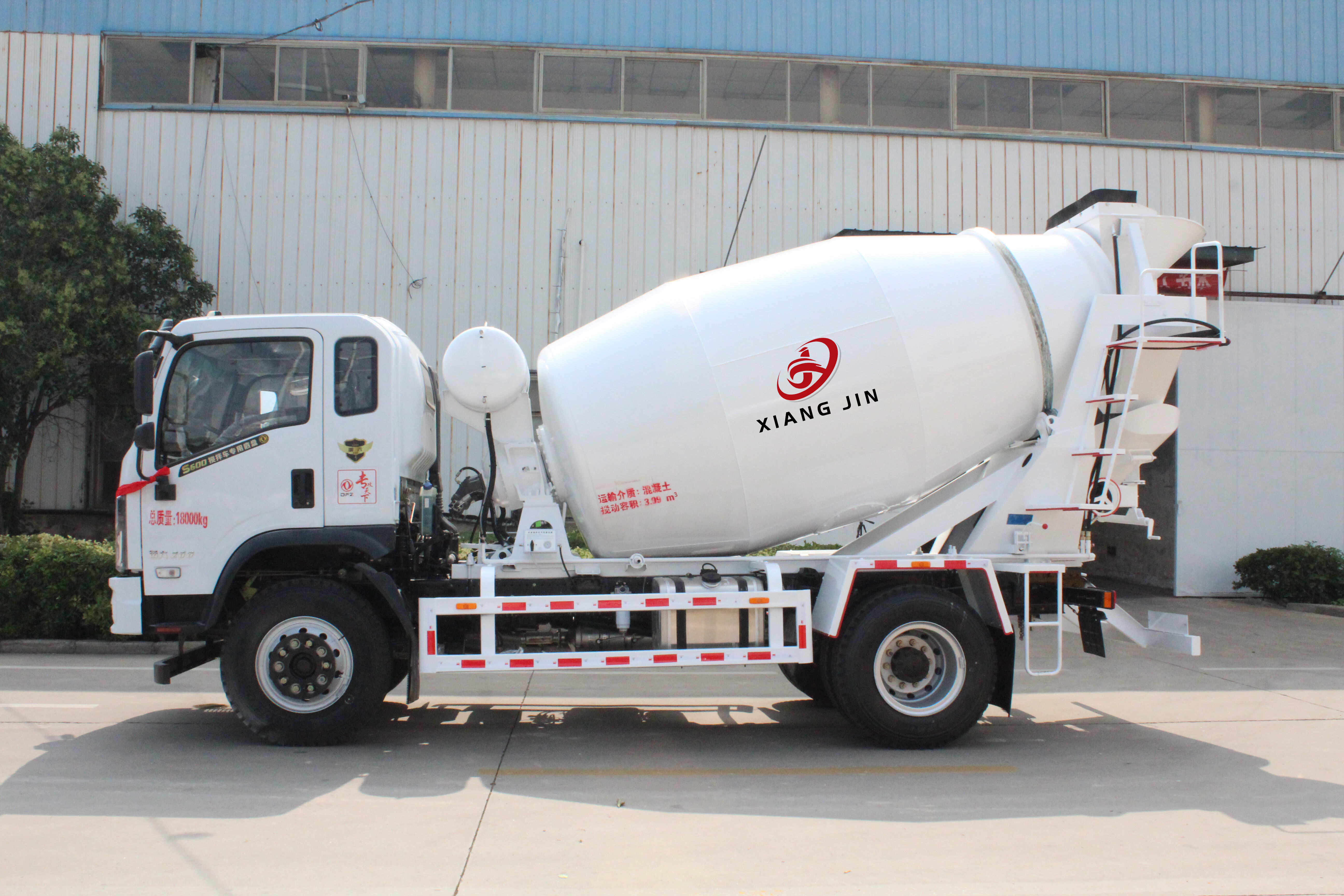NOTICIAS
Entradas recientes
 ¿Qué tipo de acero de alta resistencia al desgaste se utiliza para la carrocería de las cisternas de los camiones cisterna de cemento?2025-12-05
¿Qué tipo de acero de alta resistencia al desgaste se utiliza para la carrocería de las cisternas de los camiones cisterna de cemento?2025-12-05 Se acerca el invierno, una guía completa para el mantenimiento de vehículos plataforma de trabajo aéreo.2025-12-05
Se acerca el invierno, una guía completa para el mantenimiento de vehículos plataforma de trabajo aéreo.2025-12-05 Guía de mantenimiento invernal para camiones hormigonera2025-12-05
Guía de mantenimiento invernal para camiones hormigonera2025-12-05
Los 7 principales riesgos al seleccionar una grúa camión de 14TON — ¡Evítelos!
Introducción y Alcance
Seleccionar la grúa camión 14TON adecuada para operaciones como manipulación de contenedores portuarios, patios intermodales o elevaciones de construcción requiere equilibrar capacidad, estabilidad, cumplimiento normativo y coste del ciclo de vida. Este documento explica los 7 Principales Riesgos al Seleccionar una Grúa Camión 14TON y proporciona un kit de herramientas multimódulo: definiciones, rendimiento técnico, lista de verificación de compra, estándares, análisis de costes, ejemplo de caso y preguntas frecuentes para apoyar evaluaciones técnicas y comerciales.
Definición y Contexto
El término "Grúa Camión 14TON" se refiere típicamente a una grúa montada en camión con una capacidad de elevación nominal de alrededor de 14 toneladas métricas a un radio especificado. En entornos portuarios, el término relacionado "Grúa Camión para Manipulación de Contenedores Portuarios" indica configuraciones optimizadas para geometría de elevación de contenedores, compatibilidad de esparcidor y estabilidad del chasis para ciclos repetitivos de manipulación de contenedores. Comprender estas definiciones guía la especificación de requisitos y la evaluación de licitaciones.
7 Principales Riesgos — Resumen
- Desajuste de capacidad y ambigüedad en la clasificación
- Problemas de estabilidad y diseño de estabilizadores
- Especificación deficiente de la pluma y del sistema hidráulico
- Insuficiente clasificación del chasis y ejes para operaciones portuarias
- Incumplimiento de estándares locales y emisiones
- Riesgo de mantenimiento, repuestos y red de servicio
- Coste oculto del ciclo de vida y riesgo de reventa
1. Desajuste de Capacidad y Ambigüedad en la Clasificación
Riesgo: Los proveedores a menudo citan la capacidad máxima sin aclarar la capacidad nominal en radios o configuraciones específicas. Una Grúa Camión 14TON puede levantar 14 toneladas a 2 metros pero solo 4 toneladas a 10 metros. Los evaluadores deben exigir gráficos de carga completos que sigan protocolos de prueba reconocidos como ISO 4306 y estándares nacionales relevantes. Solicite gráficos de carga claros, tolerancias de carga dinámica y documentación del margen operativo. Verifique las capacidades nominales tanto con reeving de una sola parte como de múltiples partes, y exija certificados de prueba del fabricante.
2. Problemas de Estabilidad y Diseño de Estabilizadores
Riesgo: Una extensión inadecuada de los estabilizadores, control insuficiente de la presión en el suelo o refuerzo deficiente del chasis pueden provocar vuelcos. La manipulación de contenedores portuarios exige elevaciones repetidas a radios variables en superficies mixtas. Especifique placas de carga de estabilizadores, límites máximos de presión en el suelo y solicite cálculos de estabilidad. Prefiera indicadores de momento de carga hidráulicos (LMI) e interlocks automáticos. Insista en documentación del fabricante que muestre pruebas de elevación con combinaciones de chasis y estabilizadores utilizadas en sus operaciones.
3. Especificación Deficiente de la Pluma y del Sistema Hidráulico
Riesgo: Materiales de pluma subespecificados, componentes de desgaste o dimensionamiento insuficiente de la bomba hidráulica reducen la velocidad de ciclo y la fiabilidad, aumentando el tiempo de inactividad. Solicite detalles sobre la construcción de la pluma (grado de acero, procedimientos de soldadura), tipo y desplazamiento de la bomba hidráulica, válvulas de alivio y control, y niveles de filtración. Considere redundancia para circuitos hidráulicos críticos y uso de gestión de temperatura para turnos portuarios continuos.
4. Insuficiente Clasificación del Chasis y Ejes para Operaciones Portuarias
Riesgo: Una grúa montada en un chasis sin clasificación adecuada de ejes añade riesgo de seguridad y normativo, especialmente para manipulación de contenedores portuarios donde las cargas se concentran durante el transporte. Exija especificaciones del chasis (GVW, límites de carga por eje), especificaciones de neumáticos (índice de carga, presión recomendada) y confirme si el chasis del fabricante está reforzado en fábrica. Verifique el peso en vacío y la capacidad de carga nominal frente a cargas útiles operativas, incluidos pesos de esparcidor y contenedores.
5. Incumplimiento de Estándares Locales y Emisiones
Riesgo: El descubrimiento tardío de incumplimiento con estándares locales de seguridad, emisiones o protección del operador retrasa la puesta en servicio. Especifique certificaciones requeridas como CE, ANSI, evidencia de calidad ISO 9001 y estándares locales de emisiones. Para motores, confirme cumplimiento con su nivel jurisdiccional (por ejemplo, National VI para China). Asegure que la ergonomía de la cabina del operador, ROPS/FOPS si es requerido, y la iluminación para trabajo nocturno cumplan con las reglas portuarias.
6. Riesgo de Mantenimiento, Repuestos y Red de Servicio
Riesgo: Una grúa técnicamente superior pierde valor cuando los plazos de entrega de repuestos son largos y la red de servicio es escasa. Solicite compromisos de plazo de entrega para repuestos críticos, opciones de almacenamiento local, paquetes de capacitación para equipos de mantenimiento e intervalos de mantenimiento preventivo recomendados. Evalúe el SLA de respuesta del fabricante, capacidad de diagnóstico remoto y disponibilidad de equipos móviles de servicio del fabricante.
7. Coste Oculto del Ciclo de Vida y Riesgo de Reventa
Riesgo: El coste total de propiedad incluye uso de combustible o energía hidráulica, mantenimiento programado, tiempo de inactividad, capacitación del operador y valor residual. Exija un modelo de coste del ciclo de vida a los proveedores: consumo de combustible por hora de operación, intervalos promedio de cambio de aceite hidráulico, programas de reemplazo de componentes principales (cabrestante, secciones de pluma) y valores esperados de reventa en el mercado después de años de servicio definidos. Realice análisis de escenarios para comparar ofertas más allá del CAPEX.
Métricas de Rendimiento Técnico a Exigir
- Gráficos de carga completos a múltiples radios y ángulos de pluma.
- Certificados de calibración de momento nominal y LMI.
- Tamaño de placas de presión de estabilizadores, presión máxima en el suelo y tiempo de estabilización.
- Tipo de bomba hidráulica, tasas de flujo, ajustes de alivio y clase de filtración.
- GVW del chasis, cargas por eje, distancia entre ejes y peso en vacío.
Lista de Verificación de Compra para Evaluadores Técnicos y Comerciales
- Exija prueba de aceptación en fábrica (FAT) con opción de testigo.
- Especifique kit de repuestos y plazos de entrega garantizados en el contrato.
- Incluya penalizaciones por rendimiento por rendimiento perdido o tiempo de inactividad no programado.
- Solicite características de seguridad documentadas: LMI, protección contra sobrecarga, válvulas de seguridad hidráulicas.
- Exija manuales de operador y mantenimiento en idioma local.
Estándares, Certificaciones y Cumplimiento
Consulte estándares relevantes como ISO 4306 para grúas, ISO 9001 para QMS del fabricante y emisiones locales como National VI para motores. Para manipulación de contenedores portuarios, también verifique declaraciones de carga de trabajo segura y protecciones del operador consistentes con reglas de la OMI o autoridades portuarias locales. Asegure documentación para CE o equivalentes regionales si se espera tráfico portuario internacional.
Escenarios Industriales y Casos de Uso
Diferentes escenarios cambian las prioridades de riesgo. Para movimientos de contenedores de alta frecuencia, priorice velocidad de ciclo, refrigeración del chasis y estabilizadores reforzados. Para tareas de construcción mixtas, prefiera versatilidad de pluma y variedad de accesorios. Para sitios remotos, favorezca hidráulica simple con fácil mantenibilidad y repuestos comunes. Al evaluar una flota mixta, asegúrese de que la Grúa Camión 14TON se integre con equipos de manipulación de patio y esparcidores.
Coste, Alternativas y Estrategias de Reemplazo
Compare ofertas de Grúa Camión 14TON con alternativas: grúas más grandes con mayor margen de estabilidad, grúas araña para espacios reducidos o unidades especializadas de Grúa Camión para Manipulación de Contenedores Portuarios con esparcidores dedicados. Evalúe compensaciones en coste de adquisición versus eficiencia de utilización y valor de reventa. Para muchas flotas, kits de accesorios modulares y mantenimiento estandarizado reducen el coste del ciclo de vida.
Estudio de Caso: Integración de Flota y un Activo Complementario
En una flota de servicios municipales e industriales, un conjunto mixto de vehículos de elevación y servicio produce mayor utilización. Por ejemplo, integrar un vehículo de servicio confiable comoCamión de Succión de Aguas Residuales 10m3 junto a grúas apoya la preparación y limpieza del sitio. Este modelo EQ 1125SJ8CDC tiene un tanque de 10 metros cúbicos, motor National VI, espesor de tanque de 6mm y profundidad de succión vertical de 8m, lo que lo hace adecuado para mantenimiento portuario o sitios de construcción urbanos. Al evaluar la compra de grúas, considere cómo los vehículos complementarios reducen el tiempo de inactividad y aumentan el rendimiento operativo general.
Preguntas Frecuentes — Respuestas Rápidas para Evaluadores
- P: ¿Cómo verifico la capacidad nominal real? R: Exija pruebas de carga con testigo y un gráfico de carga claro del fabricante con radios.
- P: ¿Qué cobertura de mantenimiento debo exigir? R: Mínimo un año de cobertura completa con opciones para contratos preventivos extendidos y plazos de entrega garantizados para repuestos críticos.
- P: ¿Debo preferir mayor capacidad de la requerida? R: Un margen razonable (10-25%) mejora seguridad y reventa pero aumenta CAPEX; ejecute modelos de coste del ciclo de vida.
Tendencias y Preparación para el Futuro
Las tendencias actuales incluyen accionamientos de grúa electrificados, telemática para mantenimiento predictivo y sistemas mejorados de asistencia al operador. Para manipulación de contenedores portuarios, interfaces listas para automatización y diagnóstico remoto se convierten en diferenciadores. Al especificar equipos de Grúa Camión 14TON, incluya telemática e interfaces modulares para proteger el valor durante un ciclo de vida de 7-10 años.
Por Qué Elegirnos y Próximos Pasos
Nos especializamos en plataformas de trabajo aéreo, camiones mezcladores de concreto, grúas camión y una amplia gama de vehículos diseñados. Nuestro apoyo en compras ayuda a equipos técnicos y comerciales a evitar los 7 Principales Riesgos al Seleccionar una Grúa Camión 14TON mediante validación de gráficos de carga, verificación de clasificaciones de chasis y diseño de contratos de mantenimiento. Contacte a nuestro equipo de ingeniería de ventas para una evaluación personalizada, plan de testigo de aceptación en fábrica y comparación de coste del ciclo de vida para asegurar que la Grúa Camión 14TON o Grúa Camión para Manipulación de Contenedores Portuarios seleccionada cumpla con sus objetivos operativos.
Recomendaciones Finales
Para evitar errores comunes, insista en gráficos de carga documentados, pruebas de estabilidad, compromisos claros de repuestos y acuerdos de servicio local. Incluya cláusulas de penalización por entrega y rendimiento y prefiera proveedores que ofrezcan telemática y soporte de diagnóstico. Ya sea que su prioridad sea una Grúa Camión para Manipulación de Contenedores Portuarios o una Grúa Camión 14TON general, la especificación correcta y protecciones contractuales salvaguardarán el tiempo de actividad y el coste total de propiedad.
Deja una respuesta
Nos especializamos en camiones con plataforma de trabajo aéreo, camiones hormigonera, camiones grúa, tambores hormigonera, grúas araña, camiones volquete, barredoras, máquinas niveladoras láser, grúas neumáticas, cargadoras de ruedas, etc.
Contacto
Obtenga una cotización



